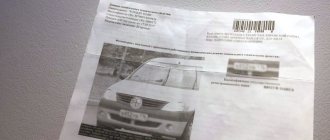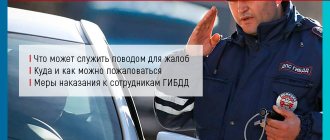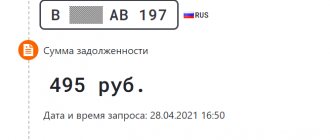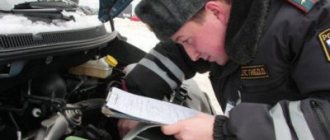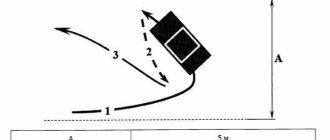Why is it needed?
So, any punishment is imposed on the driver only after a certain review procedure. This procedure is called an administrative case. In general cases, it can be considered by police officers or judges (less often, prosecutors and other officials).
The protocol is needed in order to initiate such an administrative case. Essentially, without this paper (the protocol for 2021 is only possible in written form, but not electronic), there is no business itself. But there are exceptions.
Article 28.2 of the Code of Administrative Offences. 1. A protocol is drawn up on the commission of an administrative offense, except for the cases provided for in Article 28.4, parts 1, 3 and 4 of Article 28.6 of this Code.
Deadline for drawing up a protocol on an administrative offense
The deadline for drawing up the protocol is regulated by Article 28.5 of the Code of Administrative Offenses:
1. A protocol on an administrative offense is drawn up immediately after the discovery of an administrative offense.
2. If additional clarification of the circumstances of the case or information about an individual or information about a legal entity is required in respect of which a case of an administrative offense is being initiated, a protocol on the administrative offense is drawn up within two days from the moment the administrative offense is discovered.
3. In the case of an administrative investigation, a protocol on an administrative offense is drawn up upon completion of the investigation within the time limits provided for in Article 28.7 of this Code.
In practice, when violating traffic rules, the first paragraph of the article is usually used, i.e. the protocol is drawn up immediately . However, if necessary, the preparation may be delayed.
How is it different from a resolution?
The traffic police protocol differs from the resolution, and the difference is cardinal, although they both relate to the fact that the driver violated traffic rules.
If the protocol, as we said above, initiates a case of violation, then the resolution actually ends the consideration of this case. That is, a resolution is a kind of verdict and outcome of the procedure for clarifying the circumstances and determining the driver’s guilt with the imposition of a fine (or other type of punishment) as the result of this case.
In principle, many of the rules listed below apply to both the protocol and the resolution. After all, the latter also has a column for the comments of the person involved, where you need to write the necessary information (see below), if he does not agree with the violation of traffic rules, it also needs to be signed, and refusal to sign can result in similar consequences.
Only the samples of the traffic police protocol and resolution are different.
Is it possible to appeal the protocol?
No. There is logically nothing to appeal against in the protocol, since the protocol only initiates the case. That is, a protocol is a document indicating all the circumstances of the case for their subsequent consideration (perhaps even by another inspector or judge, prosecutor, etc.), and the case is conducted on the basis of a resolution. And there's nothing to complain about.
Only the decision is appealed.
You will also be interested in:
- Is it possible to refuse to sign the protocol and resolution and what will be the penalty for this?
- How to appeal (challenge) a traffic police fine?
- Suspension from driving a vehicle in questions and answers
The traffic police officer did not provide copies of the protocols
The traffic police officer did not provide copies of the protocols
The obligation of the traffic police officer to provide the driver with copies of protocols is provided for by a number of regulations.
Thus, the Code of the Russian Federation on Administrative Offenses states that the driver is given copies of:
— a protocol on removal from driving a vehicle, as well as a protocol on referral for a medical examination for intoxication (Part 3 of Article 27.12 of the Code of Administrative Offenses of the Russian Federation);
— certificate of examination for the state of alcoholic intoxication and (or) certificate of medical examination for the state of intoxication (part 7 of article 27.12 of the Code of Administrative Offenses of the Russian Federation;
— delivery protocol (at the request of the motorist, part 3 of article 27.2 of the Code of Administrative Offenses of the Russian Federation);
— protocol on administrative detention (at the request of the motorist, part 2 of article 27.4 of the Code of Administrative Offenses of the Russian Federation);
— protocol on personal inspection and protocol on inspection of things (at the request of the motorist, part 8 of article 27.7 of the Code of Administrative Offenses of the Russian Federation);
— protocol on the inspection of the vehicle (part 8 of article 27.9 of the Code of Administrative Offenses of the Russian Federation).
The Administrative Regulations of the Ministry of Internal Affairs of the Russian Federation dated March 2, 2009, No. 185 also confirmed the driver’s right to receive copies of protocols.
Despite the above, after a meeting with the inspector, the car enthusiast may be left with “bare hands”.
What should a driver do who has not been given copies of the protocols?
Firstly, failure to issue copies of protocols by a traffic police officer is a gross violation of the driver’s rights. If such a violation can be proven, then there is a good chance to get the case dismissed (cancellation of the protocol, appeal of the decision). After all, such reports were drawn up in violation of the law, since the driver was deprived of the right to information about the case (for example, what he was accused of).
Failure to issue copies of protocols leads to the fact that the motorist cannot protect his rights, appeal the actions of the traffic police officer, as well as other serious consequences. Therefore, the court must give an appropriate assessment to such illegal actions.
Secondly, despite the fact that copies of the protocols were not issued, there is a way to familiarize yourself with them. The fact is that Article 25.1 of the Code of Administrative Offenses gives the driver the right to familiarize himself with the case materials. Copies of the protocols are part of the case materials. This means that the car enthusiast can easily familiarize himself with them. Thus, he will receive the information necessary to appeal the actions of the traffic police officer and protect his rights.
Thirdly, to prove that the traffic police officer committed violations (in this case, he did not issue copies of the protocols), evidence is needed. Therefore, when communicating with a traffic police officer, enlist the support of witnesses, a defense attorney, or keep a recording using technical means.
Fourthly, the above are examples where a traffic police officer is obliged to issue a copy of the protocol only if the motorist has made a corresponding request (to issue a copy of the protocol for inspection of belongings, personal search, administrative detention).
In order not to constantly stand “with your hand outstretched”, you can initially submit a written petition demanding the issuance of copies of all documents drawn up (against signature).
Such a requirement can be stated in a written explanation, in a protocol on an administrative offense or on a separate sheet of paper. If a traffic police officer wants to deny your request, he will have to issue a written determination (Articles 24.4, 29.12 of the Code of Administrative Offenses of the Russian Federation). In such a determination, it is necessary to provide a reasoned indication of why the motorist was denied a justified request. It is very difficult to do this legally, which means copies of the protocols will be issued.
Fifthly, in order not to be left without copies of the protocols, you need to be very careful when drawing up the protocols. For example, you should never sign the box “received a copy of the protocol” until it is actually issued.
When is it not carried out?
In fact, there is only one such exception - the absence of the fact that the person involved challenges the punishment. Then a decision is immediately issued - this is a document that already establishes the driver’s guilt, and he is assigned an administrative fine or other punishment (Part 1 of Article 28.6 of the Administrative Code).
A decision without a protocol can be made only in cases where the article of the code provides only for either a fine or a warning.
When must a traffic police report be drawn up?
From the above, it is logical that if you do not agree with the violation of traffic rules, then a protocol must be drawn up against you (part 2 of article 28.6 of the Code of Administrative Offenses and clause 142 of the Administrative Regulations). At the same time, it can be written later - after the decision is made.
This is a legislative absurdity when a protocol, which in essence only initiates a case, is written after the punishment in this case has been assigned by the corresponding resolution.
Termination of an accident case - grounds, procedure
If there is a case filed for an administrative offense and circumstances are discovered that preclude proceedings for an administrative offense, provided for in Art. 24.5 of the Code of Administrative Offenses of the Russian Federation, a traffic police officer issues a resolution to terminate proceedings in a case of an administrative offense.
The circumstances in the presence of which the case of an accident is subject to termination include:
- absence of an administrative offense event;
- the absence of an administrative offense, including the fact that an individual, at the time of committing an unlawful action (inaction), has not reached the age at which administrative responsibility begins;
- actions of a person in a state of extreme necessity (that is, actions taken to eliminate a danger that directly threatens the personality and rights of this person or other persons, as well as the legally protected interests of society or the state, if this danger could not be eliminated by other means and if the harm caused is less significant than the harm prevented);
- issuing an act of amnesty if such an act eliminates the application of administrative punishment;
- declaring that the law or its provisions establishing administrative liability for an act have become invalid, except in the case of the simultaneous entry into force of provisions of the law that abolish administrative liability for the act and establish criminal liability for the same act;
- expiration of the statute of limitations for bringing to administrative liability. The statute of limitations for prosecution for traffic violations is 2 months when the case is considered by the traffic police and 3 months when the case is considered by the court;
- the presence, for the same fact of commission of illegal actions (inaction) by a person in respect of whom proceedings in a case of an administrative offense are being conducted, of a resolution imposing an administrative penalty, or a resolution of termination of proceedings in a case of an administrative offense, provided for in the same article or the same part of an article of the Code of Administrative Offenses of the Russian Federation, or a resolution to initiate a criminal case;
- death of an individual against whom proceedings are being conducted for an administrative offense;
- other circumstances in the presence of which a person who committed actions (inaction) containing elements of an administrative offense is released from administrative liability.
Sample traffic police report 2021
The legislation of 2021 regulates only the procedure for filling out the protocol regarding the mandatory data that must be indicated in it. There is no sample protocol in the established form. But there is a recommended sample, which is prescribed in the Administrative Regulations of Order No. 664 of the Ministry of Internal Affairs.
The protocol is filled out on both sides and has one sheet.
Sample of the front side of the protocol:
Reverse side of the protocol:
.
What are the rules for writing out?
The procedure for drawing up a protocol is regulated by Article 28.2 of the Code of Administrative Offenses and neighboring articles. Thus, the protocol must contain certain information about the place and date of the traffic violation, about the inspector and the driver.
In particular, the required data for the protocol (Part 2 of Article 28.2 of the Administrative Code):
- date and place of writing the protocol on the APN,
- Full name and position of the traffic police inspector who issues it
- Full name, registration address, place of work of the hired driver,
- Full name, registration addresses of witnesses and/or victims due to the driver’s fault,
- date and time of traffic violation, as well as a description of the violation event itself,
- any other data somehow related to the consideration of the APN.
The protocol also provides space for explanations from the person involved, those affected by the violation and witnesses.
It is imperative that when a traffic police officer writes a protocol in our situation, he is obliged to explain the rights of the person involved, in particular, Article 25.1 (the right to familiarize himself with the documents in the case), as well as Article 51 of the Constitution of the Russian Federation (the right not to testify against oneself or one’s close relatives) - this is prescribed part 3 of article 28.2 of the Code of Administrative Offenses, as well as paragraph 150 of the regulations.
Next, the original protocol remains with the inspector, and the driver is given a copy of it, and is also asked to sign it.
Should the inspector write out a protocol in front of me?
No. The inspector does not have such a direct responsibility. Both the protocol and the resolution can be written separately from the driver. But an important point: the driver (the person against whom the case has been initiated) must be presented with a protocol for review by the traffic police officer, and also asked to sign and write comments in this document. The duty of the traffic police inspector to do this is stated in paragraph 151 of the regulations.
What if you don't sign?
As we have already said, it is the inspector’s responsibility to hand over the traffic police report for the driver’s signature. Can he force a subscription if the latter refuses to do so? No.
But your refusal to sign the protocol may mean absolutely nothing. Moreover, usually those who refuse it, taking an aloof position, do not even look at it and do not read what the inspector wrote there. And he could write a lot.
That is why, instead of refusing to sign the protocol, we recommend, on the contrary, that you study it carefully, and also write in the explanation column your violated rights and directly indicate your disagreement with the violation.
It is a common practice that a copy of the protocol is not offered to the driver for signature at all. In this case, the traffic police officer, taking advantage of the driver’s ignorance of the law, simply does not even offer him a protocol to sign. Instead, in the column for this he writes “Refused to sign.” Part 5 of Article 28.2 of the Code of Administrative Offenses gives the inspector this right.
That is why we advise you to videotape the process of conducting a case against you.
Something else useful for you:
- How to appeal a fine for not allowing a pedestrian to pass? Form, sample and instructions
- How to appeal a speed camera ticket? Complaint form, procedure, deadlines
- A fine for average speed - is it legal and how to appeal?
Can the inspector draw up a report not immediately?
Maybe, but only in exceptional cases. The right to write out a protocol is then given to him by clause 143 of the regulations of the Ministry of Internal Affairs. There can be only 2 reasons for writing a traffic police report not immediately in 2021:
- unknown information about the circumstances of the case at the moment,
- impossibility of finding out personal information about the person involved.
In both cases, the delay in prescribing should not exceed 2 days.
Needless to say, the listed reasons for deferment cannot, in principle, occur in standard violation schemes. For example, when a driver saw a traffic violation on the road, he stopped the driver to attract attention. In this case, the traffic police officer has all the data.
The procedure for drawing up a protocol on an administrative offense
The protocol on an administrative offense must contain the following data (Article 28.2 of the Code of Administrative Offences):
2. The protocol on an administrative offense shall indicate the date and place of its preparation, the position, surname and initials of the person who compiled the protocol, information about the person against whom the case of an administrative offense has been initiated, surnames, first names, patronymics, addresses of the place of residence of witnesses and victims, if there are witnesses and victims, the place, time of commission and event of the administrative offense, an article of this Code or the law of a constituent entity of the Russian Federation providing for administrative liability for this administrative offense, an explanation of the individual or legal representative of the legal entity against whom the case was initiated, other information, necessary to resolve the case.
The protocol must indicate:
- Date and place of compilation.
- Traffic police officer details.
- Driver details.
- Data from witnesses and victims.
- Place and time of traffic violation.
- The event of an administrative offense and the article of the normative document providing for liability.
- Driver's explanation.
The text of the protocol is filled in by the traffic police officer (except for the “driver’s explanation” field). After drawing up the document, the driver should have the opportunity to familiarize himself with it:
4. An individual or a legal representative of a legal entity against whom a case of an administrative offense has been initiated must be given the opportunity to familiarize themselves with the protocol on the administrative offense. These persons have the right to submit explanations and comments on the contents of the protocol, which are attached to the protocol.
In addition, the driver can supplement the protocol with his own comments, which must be attached. Please note that if any fields or lines are left blank in the protocol, then put dashes in them. This will protect you from entering data into the document that is not in your favor.
After completing the protocol, it must be signed by the driver and the traffic police officer.
Note. The driver must fill out the explanation field and then sign the protocol. For some reason, in practice, many drivers refuse to sign the document. I don't know what they are thinking about at this moment. However, the absence of even a basic explanation leads to the fact that the matter is not decided in their favor.
If the driver refuses to sign the protocol, a corresponding note is made in the document. This does not make the protocol invalid. There is simply no explanation or signature from the driver.
After drawing up the document, the driver receives a copy of it (Article 28.2 of the Administrative Code):
6. The individual or legal representative of the legal entity against whom a case of an administrative offense has been initiated, as well as the victim, is given a copy of the protocol on the administrative offense against signature.
What to write in the protocol if you do not agree with a traffic violation?
One of the basic rules for filling out a protocol by a driver, in which many drivers are mistaken, is that they harm themselves if they refuse to sign the document. As we said above, you don’t need to do this, but, on the contrary, carefully study it and sign it, as well as make the necessary notes, but which ones?
So, if you do not agree with the traffic violation charged to you, then you need to write the following in the protocol. It is important to write briefly and concisely. But, if your text does not fit in any columns, then write in these corresponding columns: “I gave the explanations on a separate sheet” and, of course, write what you want on a separate paper.
- In the field for explanations of the person involved, you need to write: “I do not agree with the violation. I need the help of a defender." Thus, you immediately report the fact of challenging a traffic violation. If you do not write this right away, then this, of course, will not deprive you of the right to appeal the decision with a fine, but the judge or other body considering the case will take into account that you did not agree with this initially. You can also briefly write a rationale for disagreeing with the violation.
- In the same column, if the traffic police officer did not explain your rights, you also need to make a note about this: “Rights not explained.”
- If there are witnesses or there is a video recording that can prove your innocence, write in the comments: “There is a video recording from the recorder.” or “There are witnesses [full name]. I request their involvement in the consideration of the administrative case.”
- If a traffic violation was committed (or not committed, but the traffic police officer blames it) in another city, and you want the case to be considered in your city, then write in the comments: “I am requesting that the case be considered at the place of residence.” The inspector must grant this request or provide compelling reasons for refusing to grant it. It is important to know that employees also respond to written requests in writing.
Protocol violations
Sometimes a document can be declared invalid if errors were identified during the preparation of the protocol on the offense, as well as a violation in the order of drawing up.
A person against whom a case has been opened for an administrative violation must carefully monitor what information is entered into the protocol by the inspector.
The traffic police officer should not delay in drawing up the protocol . The document is drawn up immediately (exception: Article 28.5, paragraphs 2 and 3).
If the inspector delays the compilation unlawfully, this fact can later be used in court as a defense. It is better to record the entire process on camera, which will help identify any violations of the procedure.
If the inspector has not explained the rights and obligations to the citizen, the appropriate box must be marked “I do not agree.” Sometimes even such a mark is enough to challenge the legality of the protocol.
If gross factual errors were made during the preparation, and they can be proven in court, the protocol will be declared invalid. Be sure to put a dash or “Z” in each empty space.
The inspector must also provide a copy of the report to the driver. If a traffic police officer does not enter the testimony of declared witnesses or witnesses into the protocol, this is a violation.
If a traffic police inspector invites citizens who were not at the scene of the incident at the time of the offense to testify, and also invites them to sign a protocol, such actions can be seen as signs of a crime being committed.
Any corrections in the document must be certified by the signature of the official who draws up the protocol and the signature of the detainee. So the latter certifies that he is familiar with the correction and agrees.
Assignment of punishment without protocol
The protocol is not drawn up in the following cases:
- punishment in the form of a warning or a fine is imposed at the place where the administrative offense was committed, and the driver agrees with his guilt;
- The violation was recorded by security cameras that operate automatically.
A protocol is a document drawn up by an authorized official, which reflects the event of an offense. The driver must ensure that all protocol requirements have been met.
Usually drawn up immediately, but also within two days or after the end of the administrative investigation.
Drawing up a protocol is preparation for consideration of the case, and the motorist must carefully read what information the traffic police inspector entered into the protocol.
Remember: Article 1.5 of the Code of Administrative Offenses of the Russian Federation regulates that a person against whom proceedings are being conducted for an offense cannot be considered guilty until his guilt is proven in court. Nothing obliges a citizen to prove his innocence.
Can I appeal a fine if there is an error in the protocol?
Error is different, and here everything depends on its nature.
There are simply typos, to which the judge, when appealing, will simply turn a blind eye or send it for correction, which will in no way entail the cancellation of the fine. Such errors include simple typos (for example, the inspector made a mistake in the letter in the last name, but this does not give reason to believe that you are not the culprit, since the rest of the data is correct), errors with the number of the violated traffic rules clause with an adequate description of the circumstances and a correctly written article of the Code of Administrative Offenses.
But there are also significant mistakes that will allow you to effectively challenge the fine. These include, for example, an error in the address of a traffic violation, if a protocol is issued for a prohibited stop.
As for the incorrectly specified article of the Code of Administrative Offenses, if as a result of this the wrong fine is imposed, then upon appeal, most often this will be reclassified into the correct article with an adjustment to the amount of the fine, according to this new article.
Can the traffic police report be the only evidence?
Yes and no. The point here is the vagueness of the assessment of evidence by the person examining the case, as well as, to be honest, the obvious biased attitude of the majority of judges towards drivers with a “presumption of guilt” of the latter.
The fact is that the “NONDSP” practice has always worked in the courts - there is no reason not to trust a police officer. And, if the traffic police protocol is actually the only indicator of the existence of an offense against the driver’s words, then the protocol will be more trusted, because it was drawn up by the official who took the oath. Alas, the judges are guided by this opinion. For them, an employee cannot lie.
However, it seems that in 2021 this issue is still going towards the driver - the Supreme Court took the driver’s position in disputes over violations, when the only evidence is whether the protocol serves, assuring that the traffic police inspector is obliged to present a full set of evidence to attract the motorist to fine or deprivation. Following the Supreme Court of the Russian Federation, the regional Supreme Court of one of the regions followed – in Tatarstan a similar decision was also made on appeal:
